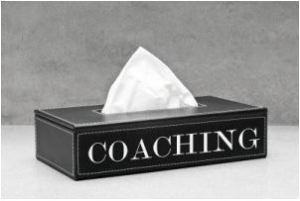Innovation inside big businesses requires a culture in which people feel relaxed, fairly rewarded, and valued. The same applies to small businesses, right? Recently, Charles Day, the CEO of Lookinglass, wrote an article for Fastcocreate on this truism as it relates to creative talent. He observes that, “Many creative businesses limit their talent recruitment and retention strategies to money and flattery.”
Day recommends the following 8 means to attract and retain top creative talent. Consider how many of these practices may be good human resources concepts that would apply across the board!
1. BUILD AN EVANGELICAL BUSINESS
Creative people yearn to make one thing more than any other. A difference. They want to solve problems they believe are important. Ten years ago, Netflix and Blockbuster were in the same business. The difference lay in their respective visions of the future of movie rentals. Internet-supplied delivery at your convenience? Or rainy Thursday nights staring at an empty shelf in a store? Which set of problems would you rather solve?
2. AVOID THE DEFLATIONARY VALUE OF MONEY
In Daniel Pink’s excellent book, Drive, he explains that many creative people are in fact demotivated by money. In some cases it makes them perform worse, because when a task becomes “work,” creative people tend to feel restricted. As a manager, focus whenever you can on highlighting the intrinsic value of solving a client’s problem. And when your company decides it must “do it for the money”–an economic reality in virtually every business–be mindful of the impact this has on your most creative people.
3. PAY FAIRLY
There is a time to spend money. Paying “below the market” shatters trust. Many companies ignore this truth, underpaying early on when the company can, then overpaying later in order to keep talent locked in place. This builds suspicion and destroys loyalty. Instead be relentlessly pro-active in maintaining market-parity compensation, with bonuses for extraordinary results.
4. MEASURE PROGRESS
At Rosetta, one of the industry’s fastest growing interactive agencies, the rigor of the employee review program stands in stark contrast to most creative businesses. Employees are measured on a set of four published benchmarks that encourage both personal initiative and collaboration. The system is transparent and consistent. At the end of the year, everyone is evaluated and rated against their own peer group at their own level. This ensures that every employee has a clear understanding of how much progress they have made. According to a recent Harvard Business Review study, nothing matters more to ambitious people.
5. ENGINEER ENGAGEMENT
Gallup Organization research has shown that most people become less engaged with an organization over time. Nothing dilutes loyalty more than a company’s willingness to support under-performers. Be relentless about improving or firing the weakest links and raising standards and expectations. It attracts and unlocks greatness.
6. INVEST IN INDIVIDUALITY
Google famously attributes its growth to the investment it’s made in allowing 20 percent of engineers’ time to be used for anything they want, so long as it makes Google a better company. Creative companies that charge by the hour can’t match this level of investment. But when you decide to invest zero in the possibility that your talent can create value in unpredictable ways, it suggests you think they are not capable of doing so.
7. BE OPEN. BE HONEST
Transparency is essential to attracting and retaining great talent. We define transparency as this: telling what you can and explaining what you can’t. Sharing openly encourages your people to give you the benefit of the doubt. Critical to building loyalty.
8. SAY THANK YOU
The artist in all of us needs to be recognized. So does the human being. And yet most companies are slow to praise or even to thank. Which is strange since each of us makes a choice every day about where we work. It need not, after all, be here. Saying thank you at the end of every day has always seemed to me to be a small acknowledgement that you take neither their talent nor their choice for granted.





